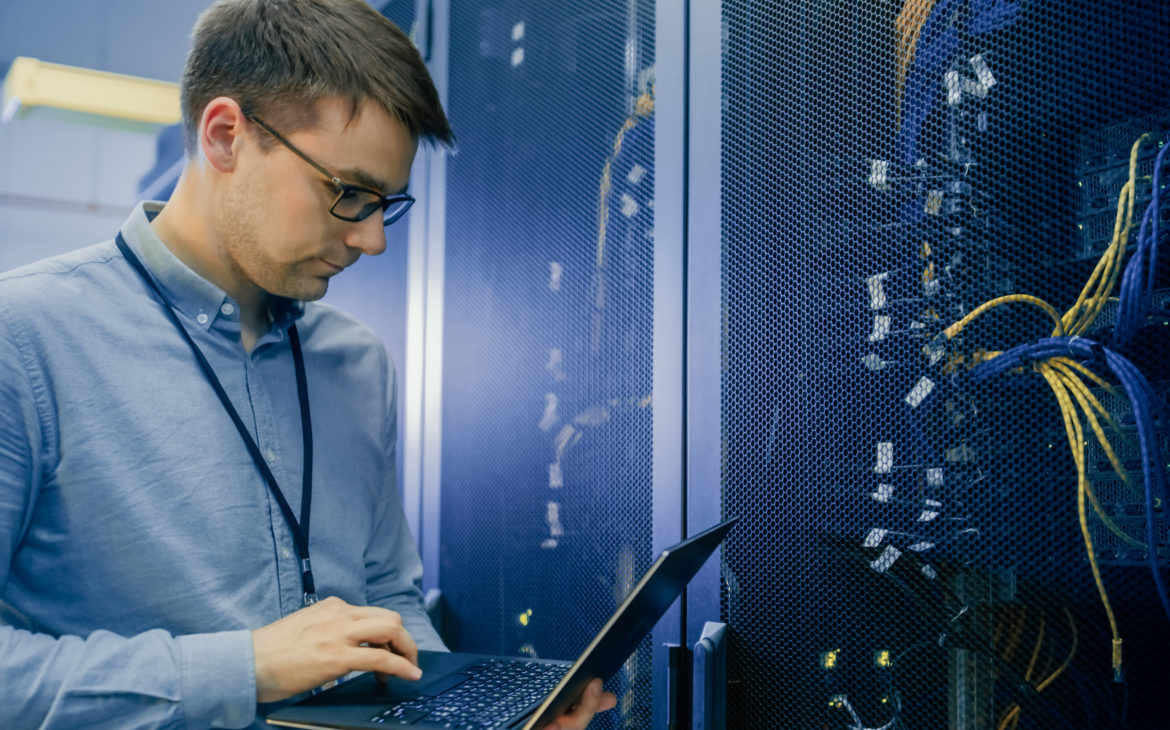You’ve picked a great place to live, the location is perfect. The amenities are top notch. The view is beautiful. And the broadband is not only lightning fast, but it helps the environment. Nice work! Did you know when it comes to sustainability, your broadband provider choice matters?
Everyone has a role to play, including Homeowners’ associations (HOAs), property management firms, and developers of multifamily communities. And it’s not a minute too soon!
The United Nation’s Intergovernmental Panel on Climate Change (IPCC) just released its 2022 Sixth Assessment Report, which warns that “widespread damage” to the planet has already occurred. What’s required: “drastic” action on a global scale.
What does sustainability mean for residential developments?
For communities and builders, creating and maintaining sustainable housing requires less waste (energy and water), more reuse and recycling, better reliability, less maintenance, and greater user satisfaction.
To reduce their carbon footprint, they must take a hard look at their energy use and consumption of resources like water and land. And importantly, they must consider their internet technology and provider.
Sustainable development was described by the U.N.’s 1987 Bruntland Commission Report as “development that meets the needs of the present without compromising the ability of future generations to meet their own needs.”
Unfortunately, single-family homes and apartments have quite a long way to go. Today, residential energy use is responsible for approximately 20% of the greenhouse gas produced in the United States. More affluent communities almost inevitably have a more significant carbon footprint.
Three things communities can do now

Good news — you can act today. Technology exists to make moving towards a sustainable lifestyle and work environment possible. You can:
- Incorporate smart technologies.
- Leverage the data that Internet of Things (IoT) devices in homes and communities produce.
- Make a wise choice of broadband type and vendor.
Make homes and communities smarter
Smart home systems have comprehensive automation, sensing, and remote-control capabilities that provide cost and environmental benefits. Consumers, communities, and builders are buying into them at accelerating rates, as seen by the rapid growth of the smart home market.
According to Mordor Intelligence, that market was worth more than $79 billion in 2020. It’s growing at a 25.3 percent compound annual growth rate (CAGR), projecting smart home revenues topping $314 billion a year by 2026.
For an easy action, look at smart thermostats. They can be programmed to turn on the heating or air conditioning only when you need them and turn them off when you’re not home. More advanced models can sense what’s happening in the environment—the weather, wind, etc.—and adjust accordingly. According to Energy Star, the average savings from smart thermosets are approximately 8% of heating and cooling bills. Savings may be greater depending on climate, personal comfort preferences, occupancy, and heating and cooling equipment.
Use all the data intelligently
The Internet of Things ties everything together. Made up of sensors and smart devices that share information, the IoT is becoming an increasing critical part of the ecosystems of homes and communities. The data that comes from it offers a vast portfolio of sustainability benefits to communities and builders.
Together, sensors and software collect all the data that smart homes produce. Then, artificial intelligence (AI) and machine learning create models of households, buildings, or communities. These models tell us how much energy they consume and how much waste they produce.
By identifying patterns, discovering correlations, and spotting trends, data is proving to be invaluable to single-family communities and multifamily developers seeking to improve their carbon footprints. For example, such systems can anticipate when AC, heat, and lights need to be adjusted depending on when a room is typically in use. Water pressure and heating timing can be based upon AI-sensed consumption levels at different parts of the day or week.
Choose your broadband technology—and provider—carefully
Before COVID, one-fifth of the energy consumed by residential buildings was due to online activities. Back then, internet use accounted for 3.7 percent of global emissions. To put that in perspective, that’s equivalent to all the air traffic around the world in a year.

This figure was expected to double by 2025, even before the “COVID effect.” With the introduction of teleworking, teleconferencing, and people being locked down at home, the volume of online data exploded. This requires scientists to dramatically raise their forecasts about internet energy consumption and its effect on the environment.
So, what are communities, property managers, and builders supposed to do? Asking residents to reduce their internet use is out of the question.
But you can choose your internet type and provider wisely, which makes a significant difference.
Fiber: A more sustainable alternative
Fiber broadband is one of the fastest internet technologies on the market. It consumes much less energy and can help decrease greenhouse gas emissions by minimizing ecological damage to the planet.
- Reduces energy usage—Fiber uses five times less energy than copper by transmitting data using light. This technology allows fiber broadband to use less than one watt to send data over 300 meters. This is compared to the four watts copper cables consume to carry data 100 meters.
When we use energy-efficient solutions like fiber broadband, we reduce the number of greenhouse gasses released into the atmosphere. A landmark study by The American Consumer Institute said more than 1 billion tons of greenhouse gasses could be eliminated by a more general adoption of fiber. - Enables telecommuting—The sustainability advantages of telecommuting are huge. Global Workplace Analytics calculated if everyone who wanted to work from home did so 50% of the time, greenhouses gasses would be reduced as if the entire New York State workforce stayed off the road forever.
- Fiber is future-facing technology—Fiber is robust and resilient, especially when it comes to environmental factors like extreme weather or harsh chemicals. Fiber doesn’t have to be frequently updated. Once fiber has been put into place, it can be functional for 30 to 50 years. Fiber providers can also offer technologies that help limit service appointments. For example, with Quantum Fiber’s Instant Internet technology, homes and apartments are pre-wired with modems. Residents can self-activate their service instead of scheduling in-person installation appointments. All this is good news for the environment. It can help reduce costs for customers, as fewer truck rolls consume less diesel fuel among other resources.

Questions to ask to make good decisions: Is your internet provider helping or hurting?
You should also pay attention to whether your broadband provider is taking a sustainable approach to operations and growth.
A 2020 IBM study found that 77% of customers say it is crucial for brands to be sustainable and environmentally responsible. And almost six in ten (57%) of customers are willing to change their purchasing habits to help reduce environmental impact.
Internet providers can show their commitment to sustainability in many ways. Here are a few questions that communities and builders should ask before signing a contract:
- Do they have expertise with designing and installing energy-efficient, long-lasting fiber internet as a foundation for IoT and Voice services?
- Does the company serve residents in an eco-friendly manner? Do they offer instant activation, online self-service support, paperless billing, and autopay programs?
Making smart choices – let us create lasting benefits
As technology evolves, we will see more opportunities for communities, homeowner’ associations, property-management firms, and apartment builders to create a safer, smarter, and more sustainable future. Everyone needs to work intelligently to make their buildings more ecologically sound. Making these investments in the right home connectivity technologies and vendors will earn you greater ROI and enable you to be a better steward of our planet. Contact a Quantum Fiber Connected Communities expert to learn about sustainable connectivity solutions tailored to your multifamily community.
Check out these related resources:
- FAQ: Do you have eco-friendly and sustainable solutions?
- Sustainability: Fiber can help builders and community managers meet today’s environmental challenges
Contact a Quantum Fiber Connected Communities expert to learn about connectivity solutions tailored to your multifamily community
Content Disclaimer - All content is for informational purposes only, may require user’s additional research, and is provided “as is” without any warranty, condition of any kind (express or implied), or guarantee of outcome or results. Use of this content is at user’s own risk. All third-party company and product or service names referenced in this article are for identification purposes only and do not imply endorsement or affiliation with Quantum Fiber. If Quantum Fiber products and offerings are referenced in the content, they are accurate as of the date of issue. Quantum Fiber services are not available everywhere. Quantum Fiber service usually means 100% fiber-optic network to your location but, in limited circumstances, Quantum Fiber may need to deploy alternative technologies coupled with a non-fiber connection from a certain point (usually the curb) to your location in order to provide the advertised download speeds. ©2024 Q Fiber, LLC. All Rights Reserved. Quantum, Quantum Fiber and Quantum Fiber Internet are trademarks of Quantum Wireless LLC and used under license to Q Fiber, LLC.
